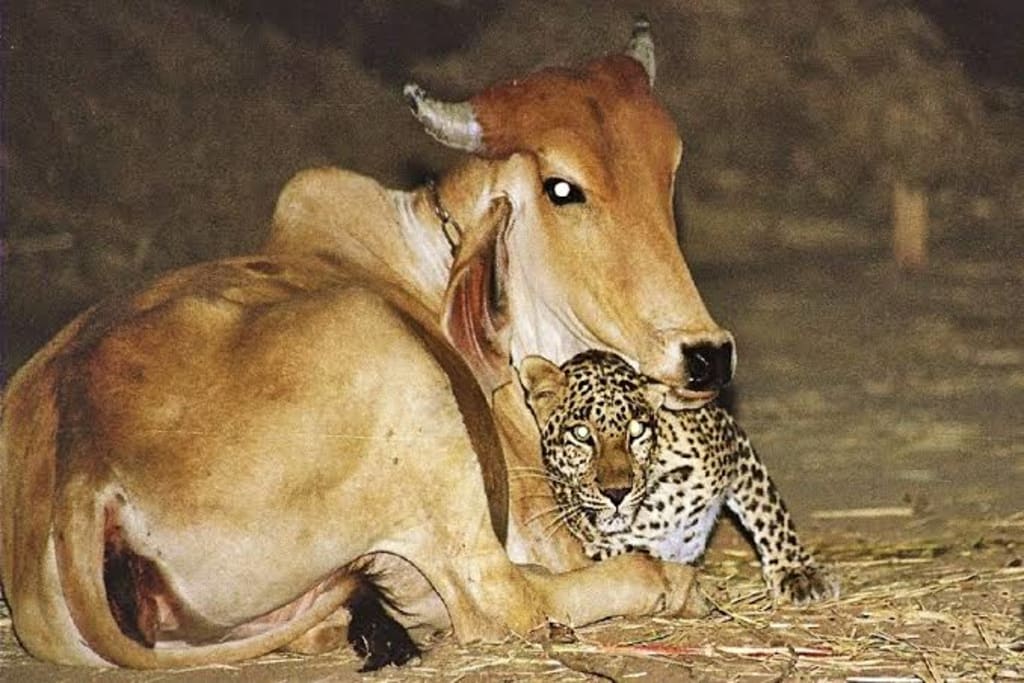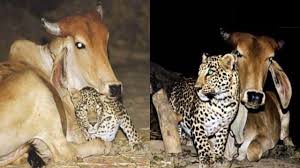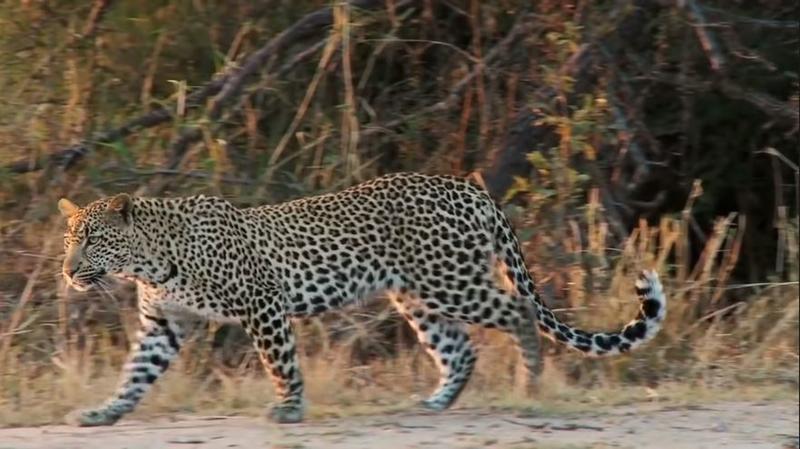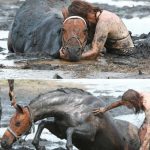A Wild Leopard. A Village Cow. And a Bond That Defied Nature.

🐆 A Wild Leopard. A Village Cow. And a Bond That Defied Nature. 🌙✨
In the small village of Antoli, located in the serene state of Gujarat, India, something extraordinary took place in 2002 that defied the laws of nature, baffled locals, and captured the hearts of anyone who heard the story. The tale is one of unexpected companionship, where the boundaries between predator and prey blurred into an unlikely and remarkable bond, demonstrating the power of compassion and comfort even in the wildest of circumstances.
For weeks, as the sun dipped below the horizon and the village settled into the quiet of the night, the villagers noticed something strange. A young, wild leopard, typically a solitary and elusive creature, emerged from the dense forest surrounding the village—but this wasn’t a typical leopard’s behavior. Instead of hunting, prowling, or seeking prey, the leopard wandered quietly toward the village yard, where a gentle cow was tethered, peacefully grazing or resting. Night after night, without fail, the leopard appeared, as if drawn by an unseen force.
At first, the villagers were understandably stunned and curious. The sight of a wild predator—so known for its strength, speed, and ferocity—sitting calmly by the side of a cow, which was traditionally its natural prey, seemed almost unnatural. There were no signs of aggression, no growls, no warning stares. In fact, it was the exact opposite: a serene stillness and silence. The leopard simply sat, often curling up next to the cow, as if the two were old friends, companions who had been together for years.
The moonlight cast an ethereal glow over the pair as they rested together beneath the stars, an image so surreal it seemed like something out of a dream or a fable. For hours, the leopard would remain next to the cow, resting its head near the animal’s legs or even lying down beside it, perfectly content. The villagers, initially amazed and perhaps even a little fearful, could hardly believe what they were witnessing. The situation wasn’t just unusual—it was unexplainable. How could a natural predator and prey share such a peaceful existence? What was drawing this wild leopard to the cow, and why wasn’t it following its instincts to hunt?
Word quickly spread throughout the village, and soon forest officials were alerted to the strange occurrence. To gain a deeper understanding of what was happening, the authorities set up cameras to document the behavior of the leopard. What they captured on film confirmed that what the villagers had been witnessing was no fluke. The leopard, time and again, returned to the yard. It didn’t show hunger, nor did it appear to be acting out of predatory instinct. Instead, the leopard seemed to find solace and comfort in the cow’s presence. There was no tension between them, no hostile energy. It was a quiet, almost magical connection, one that defied the natural order of the animal kingdom.
This baffling and beautiful occurrence captivated the imagination of many. The leopard, a symbol of wildness and power, was no longer just a hunter—it had become a creature in need of companionship, comfort, and perhaps even companionship itself. And the cow, which had been seen as nothing more than a passive farm animal, became the object of that need. The bond between them was not rooted in survival or dominance, but rather in an unspoken understanding—a sense of peace that transcended the conventional expectations of nature. 🌙💫
Psychologists, biologists, and animal behaviorists alike were fascinated by this unusual connection. What made the leopard, a solitary creature by nature, seek out the presence of the cow night after night? Some suggested that perhaps the leopard found comfort in the cow’s calm demeanor, its steady breathing and warmth, while others speculated that the young leopard may have had an early traumatic experience, perhaps losing its mother or family, leading it to seek companionship in an unexpected source. Others considered the possibility that this act of peace was something entirely new in the wild world—a rejection of predatory nature and a surprising act of empathy.
The villagers, witnessing this incredible bond firsthand, began to rethink their perceptions of the animal world. Where they once saw a fierce predator, they now saw a creature with the potential for gentleness and tenderness. The cow, too, had been redefined in the eyes of the community. No longer just a source of milk or labor, it had become an unexpected symbol of peace—a symbol that even the wildest forces of nature could be tamed by calmness and serenity.
Over the course of the following weeks, the leopard continued to return to the village, and the bond between it and the cow grew even more profound. As their story spread beyond the borders of Antoli, people from across the world were captivated by this rare example of peace between predator and prey. The unseen connection between the two animals highlighted an aspect of nature that was rarely discussed: the potential for compassion and harmony in even the most unlikely of relationships.
Eventually, as all stories of the wild tend to unfold, the leopard mysteriously vanished one day, never to return to the village yard. Some believed that the leopard had found its own path in the wilderness once again, perhaps forming connections with other animals of its kind. Others wondered if the bond it shared with the cow had been a brief, magical moment in time—a beautiful interlude in nature’s sometimes harsh rhythm.
The story of the wild leopard and the gentle cow, however, remained etched in the memories of those who had witnessed it. It serves as a reminder that even in the natural world, where the laws of survival often rule, there can still be moments of unpredictable peace, and unlikely bonds. The village of Antoli will forever remember the silent, magical nights when a wild leopard and a village cow shared the moonlight in peaceful companionship—a story that proves that sometimes, nature itself defies the expectations we place upon it.











